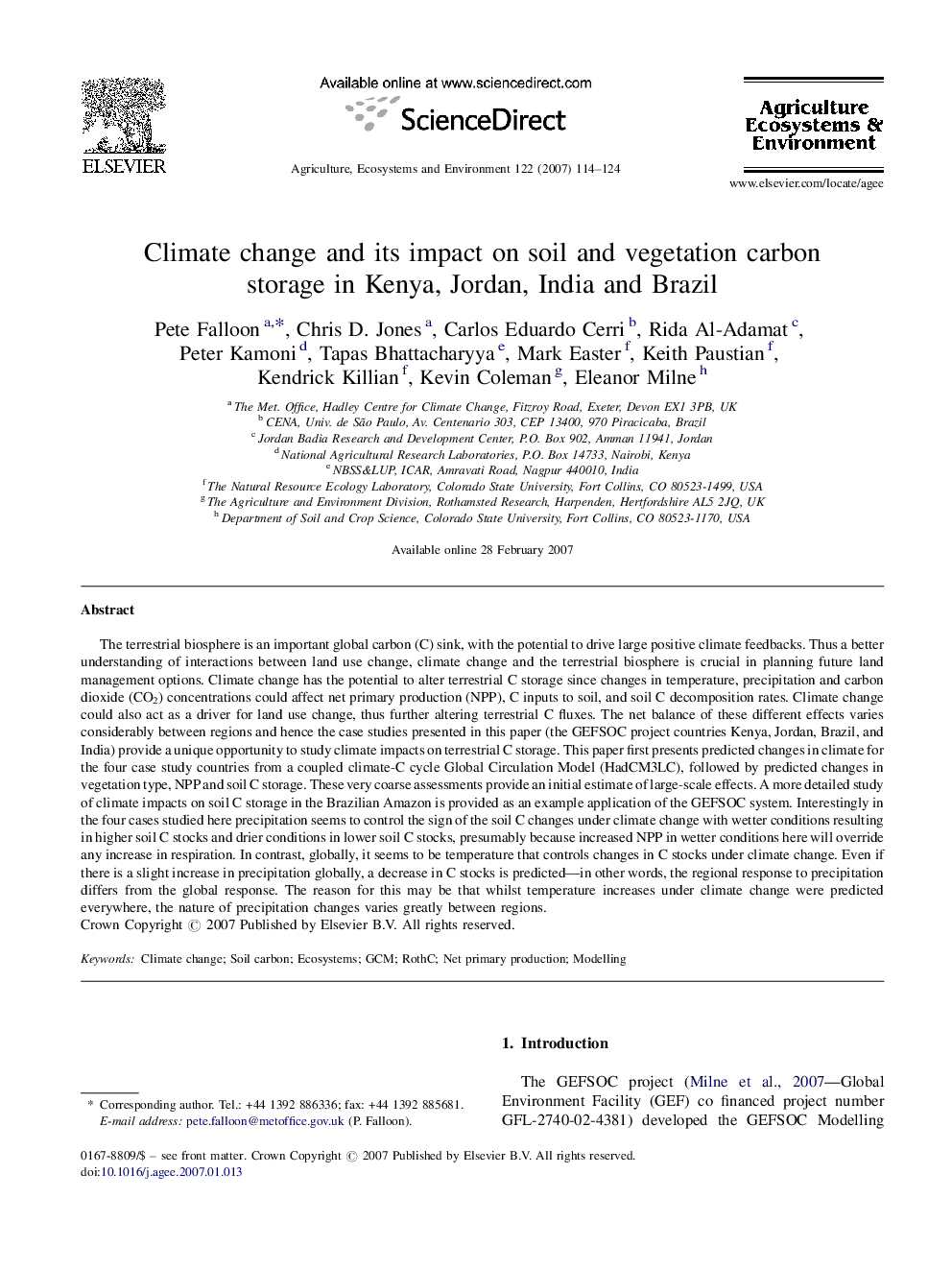| کد مقاله | کد نشریه | سال انتشار | مقاله انگلیسی | نسخه تمام متن |
|---|---|---|---|---|
| 2415555 | 1103966 | 2007 | 11 صفحه PDF | دانلود رایگان |

The terrestrial biosphere is an important global carbon (C) sink, with the potential to drive large positive climate feedbacks. Thus a better understanding of interactions between land use change, climate change and the terrestrial biosphere is crucial in planning future land management options. Climate change has the potential to alter terrestrial C storage since changes in temperature, precipitation and carbon dioxide (CO2) concentrations could affect net primary production (NPP), C inputs to soil, and soil C decomposition rates. Climate change could also act as a driver for land use change, thus further altering terrestrial C fluxes. The net balance of these different effects varies considerably between regions and hence the case studies presented in this paper (the GEFSOC project countries Kenya, Jordan, Brazil, and India) provide a unique opportunity to study climate impacts on terrestrial C storage. This paper first presents predicted changes in climate for the four case study countries from a coupled climate-C cycle Global Circulation Model (HadCM3LC), followed by predicted changes in vegetation type, NPP and soil C storage. These very coarse assessments provide an initial estimate of large-scale effects. A more detailed study of climate impacts on soil C storage in the Brazilian Amazon is provided as an example application of the GEFSOC system. Interestingly in the four cases studied here precipitation seems to control the sign of the soil C changes under climate change with wetter conditions resulting in higher soil C stocks and drier conditions in lower soil C stocks, presumably because increased NPP in wetter conditions here will override any increase in respiration. In contrast, globally, it seems to be temperature that controls changes in C stocks under climate change. Even if there is a slight increase in precipitation globally, a decrease in C stocks is predicted—in other words, the regional response to precipitation differs from the global response. The reason for this may be that whilst temperature increases under climate change were predicted everywhere, the nature of precipitation changes varies greatly between regions.
Journal: Agriculture, Ecosystems & Environment - Volume 122, Issue 1, September 2007, Pages 114–124